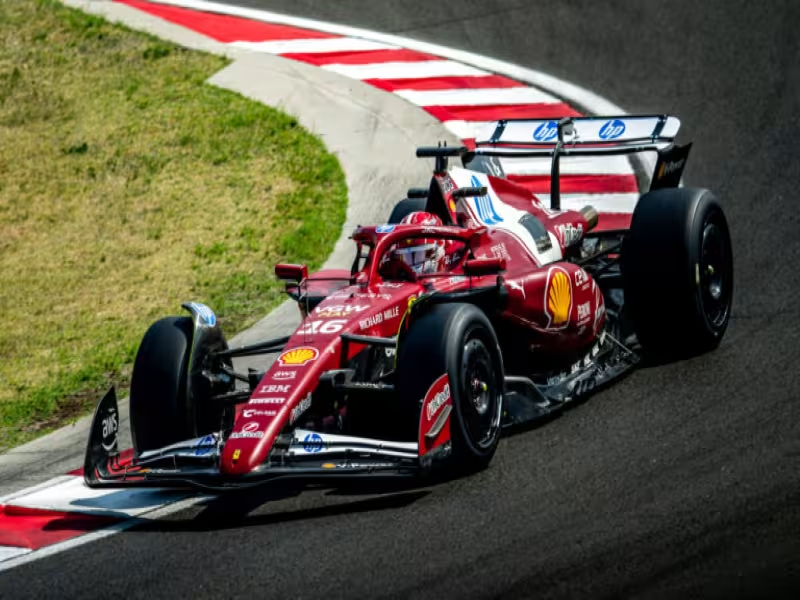
SHERIDAN, WYOMING – August 8, 2025 – Formula 1’s next chapter is taking shape — and it’s all rolling on Pirelli rubber. Over two intense days at Hungary’s legendary Hungaroring, the Italian tire giant put its 2026 prototypes to the test, gathering crucial data that could define next season’s race strategies. With McLaren, Racing Bulls, Alpine, and Scuderia Ferrari all taking turns behind the wheel, the action was as hot as the track surface.
From the Pit Lane to the Future
Testing took place August 5–6, with each day delivering its own challenges. Warm weather meant track temperatures soared past 50°C, pushing the new C1-to-C6 compound range to their limits. Day one saw McLaren and Racing Bulls running laps, while day two featured Alpine’s Franco Colapinto and Ferrari’s Charles Leclerc in action.
The focus was on fine-tuning performance across different compounds — from short bursts on C3 to C5 rubber to endurance-style runs on C2. These trials are key in determining how well each tire will handle the mix of speed, grip, and durability demanded by F1 circuits.
Narrower, Smarter, Still 18 Inches
Pirelli’s 2026 tires retain the familiar 18-inch diameter but slim down — 25mm narrower at the front, 30mm at the rear — a tweak aimed at improving aerodynamics and handling. Test cars were “mule” versions of the current season’s chassis, modified to fit the new specs without disrupting other performance factors.
Colapinto’s day was cut short after an off-track excursion that damaged Alpine’s car, ending his run at 25 laps. Leclerc, however, delivered a full day’s worth of data, clocking 144 laps and a best time of 1:19.407.
Why Budapest Matters for Tire Development
“The Hungaroring is a demanding track due to its many slow curves and the amount of energy that goes into the tires on a lap that is rather short,” explained Mario Isola, head of Pirelli Motorsport. This combination of tight turns and high loads makes it a perfect stress test for compounds that need to perform consistently over race distances.
Isola confirmed that construction work on the new tires is already finalized ahead of upcoming regulations on September 1, with compound development continuing in three more test sessions at Monza, Mugello, and Mexico City. Final homologation is set for December 15.
Editorial Extra – How 2026 Tires Could Change the Game
Compared to 2025 rubber, the slimmer 2026 design could mean:
- Sharper cornering thanks to reduced frontal width, aiding turn-in responsiveness.
- Better aero efficiency for cleaner airflow around the car, possibly increasing straight-line speed.
- Potential setup changes as teams adapt suspension and weight balance to new grip profiles.
For everyday sports car enthusiasts, think of it like swapping from a wide-track summer tire to a more agile performance model — less brute grip, more nimble handling.
Looking Ahead
With only three test sessions remaining before final approval, Pirelli is fine-tuning a product that every Formula 1 team will rely on in 2026. The Budapest runs may have been just one step, but for fans and teams alike, they were a glimpse into the next evolution of racing performance.
Learn more at www.pirelli.com.